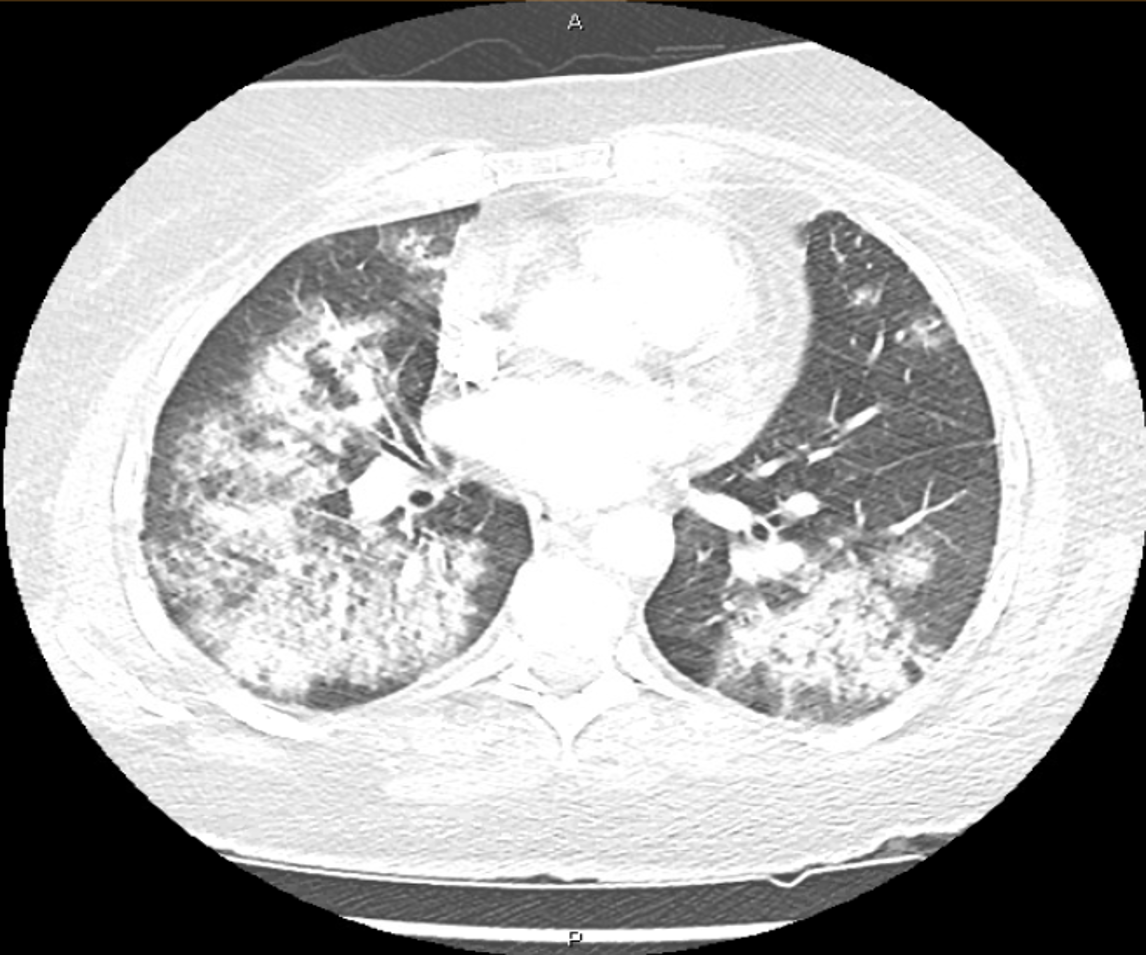Case Presentation: To our knowledge, no prior case of simultaneous hydralazine induced lupus (HIL) with diffuse alveolar hemorrhage (DAH), and antiphospholipid antibody syndrome (APLA) is reported. We report this case due to extreme complexity as prompt diagnosis and appropriate management are crucial to survival.A 68- year- old female with a history of cirrhosis and hypertension presented with hypotension, non-healing axillary and groin wounds. Initial labs revealed WBC 2.9 k/mcl, Hb 9 g/dl, and platelets 82 k/mcl. Due to concerns for sepsis, Piperacillin-Tazobactam (Zoysn) was instituted. Platelets and Hb dropped to a nadir of 1 k/mcl and 6 g/dl on day three respectively. Zoysn was held, and multiple units of blood products were transfused. Further workup showed haptoglobin <10 mg/dl, Fibrinogen 277 mg/dl, FDP 40-80 mcg/ml, and Coomb’s test 3+ for IgG which raised the suspicion for Evan syndrome. Due to increased oxygen demands, a CT scan chest was obtained, which showed bilateral lung consolidations (figure 1). Bronchoalveolar lavage demonstrated DAH. Rheumatologic work resulted strongly positive for ANA, anti-histone antibodies, p-ANCA, lupus anticoagulant, antimicroglobulin antibodies, antiphosphatidylserine antibodies, and low complement levels. Doppler lower extremities revealed venous thrombosis in the right common femoral vein. Bone marrow biopsy indicated the autoimmune process. Patient reported taking hydralazine for the past 13 months, so a diagnosis of HIL with APLA was made. She received two days of IV immunoglobulin and was further treated with high dose prednisone. She improved clinically with recovery in all cell lines. The patient was discharged home on warfarin, hydroxychloroquine, and prednisone.
Discussion: Since hydralazine introduction in 1952, it has been widely used in the management of hypertension and congestive heart failure.HIL is seen in 7 to 13% of drug-induced lupus cases, with incidence directly proportional to dosage and duration of exposure. Clinical manifestations include fever, arthralgia, rash and pulmonary-renal syndromes in fulminant cases. HIL workup can reveal homogenous pattern antinuclear antibodies (90-100% of cases), anti-histone antibodies (90-95% of cases), low complements and pancytopenia. Strong positivity for anti-MPO and anti-dsDNA correlates with pulmonary-renal involvement as seen in our patient. Management relies on discontinuing hydralazine followed by immunosuppressant therapy depending on disease severity. Mycophenolate mofetil or cyclophosphamide can be used with renal involvement while rituximab and plasmapheresis are reserved for refractory cases.
Conclusions: Thrombocytopenia is frequently seen in cirrhotic patients, but in an appropriate setting, thorough evaluation to rule out hematologic and autoimmune disorders should be done. Hydralazine, generally a benign drug, can have significant rheumatologic complications, so caution should be advised when using it in management

